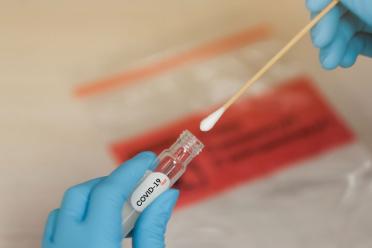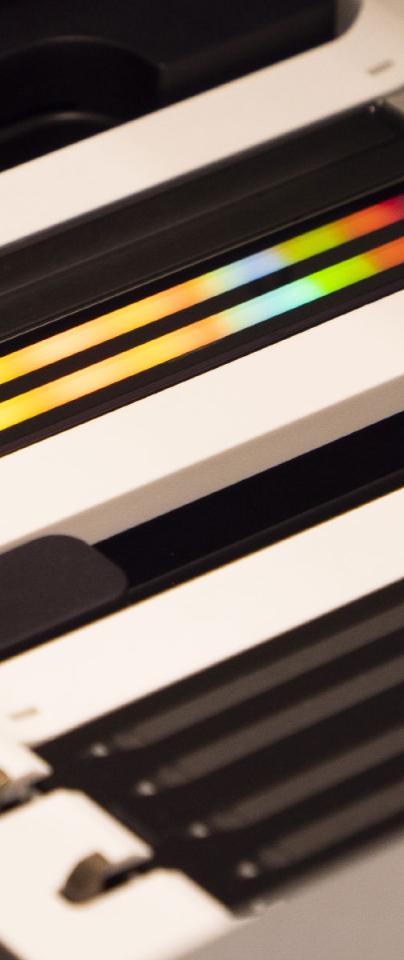How science will be better set to fight pandemics after COVID-19
The lessons we learn from COVID-19 are already providing a platform for how we respond to global health threats better in the future, and how we do science together.
We’re in the clutches of a global pandemic, which rightly has the world on tenterhooks as healthcare systems are put under severe strain and people live under lockdown. Yet, compared to pandemics of history we’re in a far better position today thanks to fields such as genomics and bioinformatics. The lessons we learn from COVID-19 are already providing a platform for how we respond to global health threats better in the future, and hint towards a more sustainable way of working.
People are afraid. The ‘great’ war has just come to end, millions have perished, communities are reeling and the world is set to rebuild. Yet the mobilisation of such large sectors of the population during this global conflict released a silent killer that will claim the lives of more men, women and children than even the ‘war to end all wars’. A new strain of influenza has jumped from poultry into a human population with no prior immunity. Misinformation has led to confusion and mistrust and governments have resorted to locking down the population and urging people to isolate.
It is 1918 and the “Spanish flu” Pandemic has hit the world. The story might sound eerily familiar to what we’re going through today with COVID-19. Spanish Flu was devastating, killing an estimated 50 million people through three successive waves of infection, spread all over the globe as troops returned from far-flung battlefields.
Globalisation means that, today, this normalised movement of people has helped coronavirus to infect huge numbers of people around the world. But this time we’re better prepared than we were in 1918. And, like with Spanish Flu, what we learn from this crisis will make our society more resilient and better prepared when the next, inevitable, pandemic arises.
Because of the massive loss of human life, the Spanish flu pandemic sparked an explosion of scientific research into influenza. Initial investigations probed the connection between the human disease and similar effects seen in pigs at the time. However, it wasn't until 1957 that an influenza pandemic could be observed using what we would recognise as modern scientific techniques. The fledgling discipline of public disease surveillance verified that crowded locations, such as schools, were central to spreading disease. Epidemiology revealed the success of vaccination programs, and new hygiene routines informed public health.
Scientists, doctors and governments were now able to monitor the effects of disease in their populations. What they still needed, however, were better ways to effectively monitor and track the development of disease.
Next-generation DNA sequencing has allowed the routine tracking of microbial pathogens as part of national surveillance programmes. The UK is a world-leader in this area and Public Health England (PHE) have multi-disciplinary teams of scientists working together delivering whole genome sequences (WGS) for the investigation and control of infectious disease.
WGS is a complete description of the DNA of an organism, including its genes. Understanding the genetic sequence at this level has been a game-changer in understanding microbial pathogenesis, that is, the ability of an organism to cause disease. WGS allows the relatedness of strains to be measured, providing an evolutionary map to be produced to track the spread and growth of disease. A leading example of this involving the Earlham Institute has been the 10k Salmonella Genomes project, which allows us to understand the spread of salmonella around the world.


The UK is a world-leader in this area and Public Health England (PHE) have multi-disciplinary teams of scientists working together delivering whole genome sequences (WGS) for the investigation and control of infectious disease.

With NGS and effective epidemiology we now have a powerful toolkit with which to monitor the spread and development of disease to inform national responses. However, as a pandemic is a global problem, we need methods in place to ensure we can generate and share good quality data and make it available to anyone - anywhere - who needs to use it.
Groups such as the Davey group at Earlham Institute (EI) develop novel open data methods and frameworks to enable scientists to describe, deposit and use research data collaboratively - and international teams have already gleaned valuable information from publically-available genome data. EI hosts a Galaxy Node, as well as being the lead institute for Elixir-UK, both of which have offered computational services in support of research into COVID-19. Elixir, for example, has offered various computational resources, while Galaxy has provided open source analysis infrastructure and workflows in support of best practice computational research into COVID-19.
EI and other institutes on the Norwich Research Park (NRP) have also been able to use their expertise in genomics, multi-omics and molecular biology in order to directly contribute to the fight against COVID-19, while forming international collaborations to better understand and model disease progression.
EI has coordinated a partnership between the institutes of NRP and the Norfolk and Norwich University Hospital (NNUH) that has provided nearly 200 volunteer molecular biologists with experience in RNA extraction and real-time PCR to increase COVID-19 testing capacity across the Norfolk and Waveney region.
EI’s Head of Genomics Pipelines Dr Karim Gharbi is also working with collaborators across NRP including Professor Sophien Kamoun at the Sainsbury Laboratory (TSL) and Professor Kristian Bowles (UEA) to scale up testing capability based on new, automated approaches for COVID-19 diagnosis. Meanwhile, Dr Tamas Korcsmaros - a group leader at EI and the Quadram Institute (QI) - is working on an international effort to model the signalling events associated with COVID-19 infection.
Furthermore, QI is part of a £20 million COVID-19 Genomics UK Consortium to sequence and monitor COVID-19. Using their experience gained from sequencing and monitoring food-borne microbial pathogens, the institute has teamed up with UEA and the NNUH to be ready to track the spread and development of the disease. Also at QI, research leader Justin O’Grady is developing a portable COVID-19 test kit that takes just 50 minutes from sample to result that could help self-isolating medical staff return to work as quickly as possible.


EI and other institutes on the Norwich Research Park (NRP) have also been able to use their expertise in genomics, multi-omics and molecular biology in order to directly contribute to the fight against COVID-19, while forming international collaborations to better understand and model disease progression.

Looking forward, many of the lessons we learn from COVID-19 will help us fight pandemics better in the future - especially now that genomics and bioinformatics infrastructures have been put to the test in a real-world scenario.
What we’re likely to see in the near future is a joining up of different components, such as health systems, food chains, travel networks and pathogen surveillance, to try and model and understand complex global interactions. To make good models, the data will also have to be ‘good’, which means we’re collecting the right clinical data to make accurate models and predictions for how as a society we should act in these types of emergencies.
Algorithms and approaches such as machine learning will be necessary to help us connect the dots of the different data. We will need, and are already developing, faster and more powerful computing infrastructures to analyse these mountains of big data. EI provides the UK National Capability in e-Infrastructure, maintaining not only a hugely powerful high performance computing centre but also the networks and tools with which to share data and resources.
We’re also witnessing the creation of new networks and the strengthening of old ones between institutes, hospitals and government bodies. An article recently published in the New York Times suggests that COVID-19 has, in fact, ‘changed how the world does science, together.’
Academia has seen a trend towards multi- and inter- disciplinarity - projects involving expertise from a range of scientific disciplines and specialities - and it is likely this will increase as a result of COVID-19. The collaboration between the institutes of Norwich Research Park and the Norfolk and Norwich University Hospital to provide testing and other services in the fight against COVID-19 is testament to that.
We are quickly seeing faster and cheaper diagnostic tools emerging, countries joining forces and trying to establish ‘global’ responses. While the institutes of Norwich Research Park are working together, throughout the world this sense of shared responsibility has seen companies and research centres donate supercomputing power, infrastructure, people power and manufacturing pipelines to help find treatments, build equipment, or develop vaccines that can help tackle this disease.
Every single day of this pandemic is teaching us lessons we can apply next time. The biggest of these is the power of collaboration and forging stronger ties with others. Whatever the date of the next global pandemic, the fastest way to recovery will be through a collective effort built from hard-won experience.


Looking forward, many of the lessons we learn from COVID-19 will help us fight pandemics better in the future - especially now that genomics and bioinformatics infrastructures have been put to the test in a real-world scenario.
